When it comes to collectible vintage military watches, there are the famed “Dirty Dozen” and then there is everything else. Twelve field watches from twelve different Swiss watchmakers, all made within the last two years of World War II and issued to British servicemen, the Dirty Dozen watches represent a rare confluence between horological and military history, while also claiming a coveted spot in the annals of war memorabilia. What brands and watches make up the Dirty Dozen, what is their story, and why are they so legendary today? Read on.
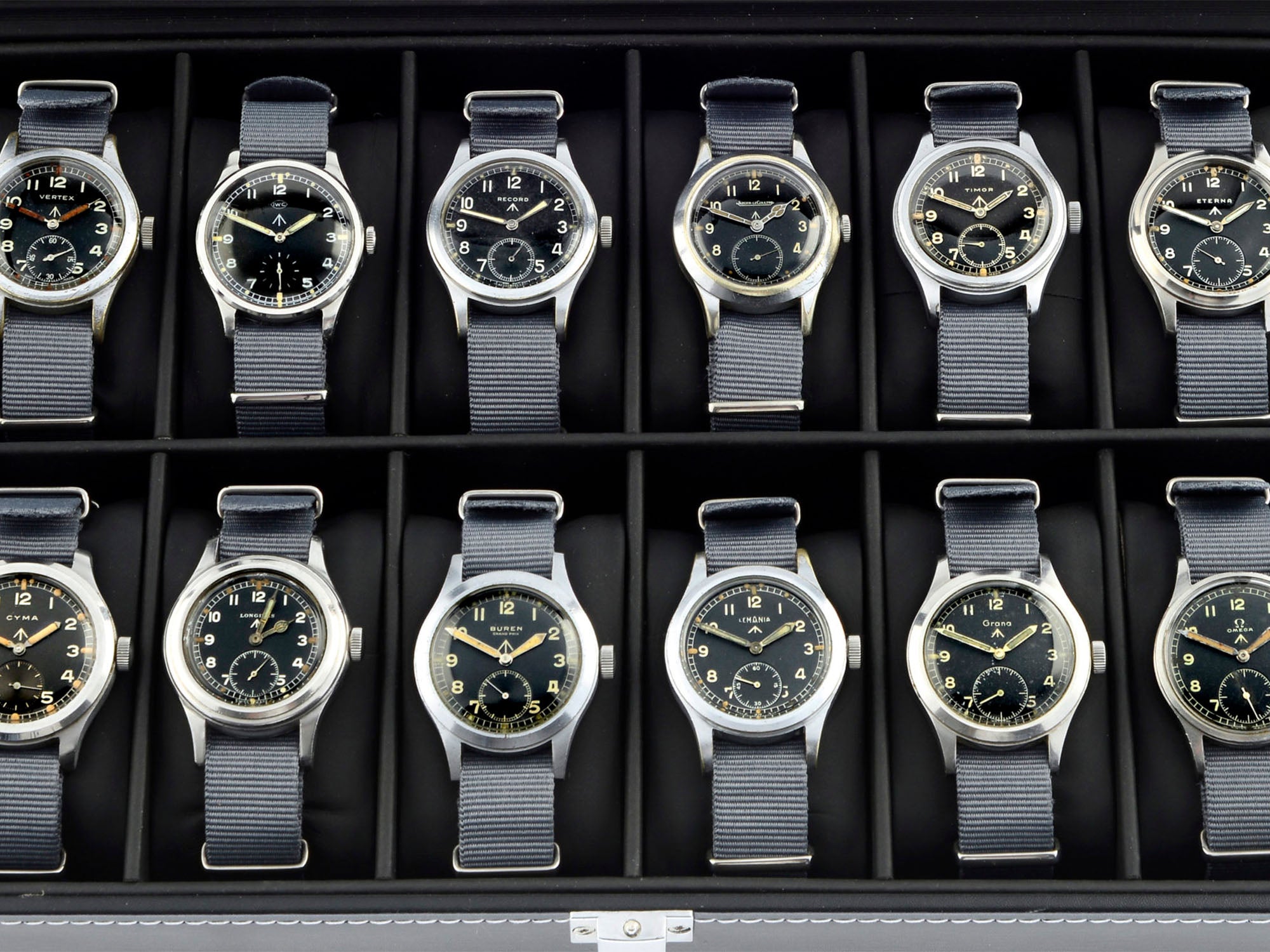
Wristwatches came into general usage for men during World War I. While pocket watches were still in vogue for social situations, they proved impractical for troops on the battlefield, who needed the use of both hands in combat situations, such as for loading one’s rifle while simultaneously checking his watch to determine the distance of incoming artillery fire. Watchmakers at the time responded to the demands of warfare in a rather makeshift way at first, re-engineering pocket watch cases with soldered strips of wire to connect them to straps of leather or canvas for wrist wear. While these “trench watches” were effective at the time, advances in military equipment, technology, and strategies in subsequent years necessitated a more purposeful approach to watchmaking as a Second World War erupted in Europe, barely two decades after the end of the so-called War to End all Wars.
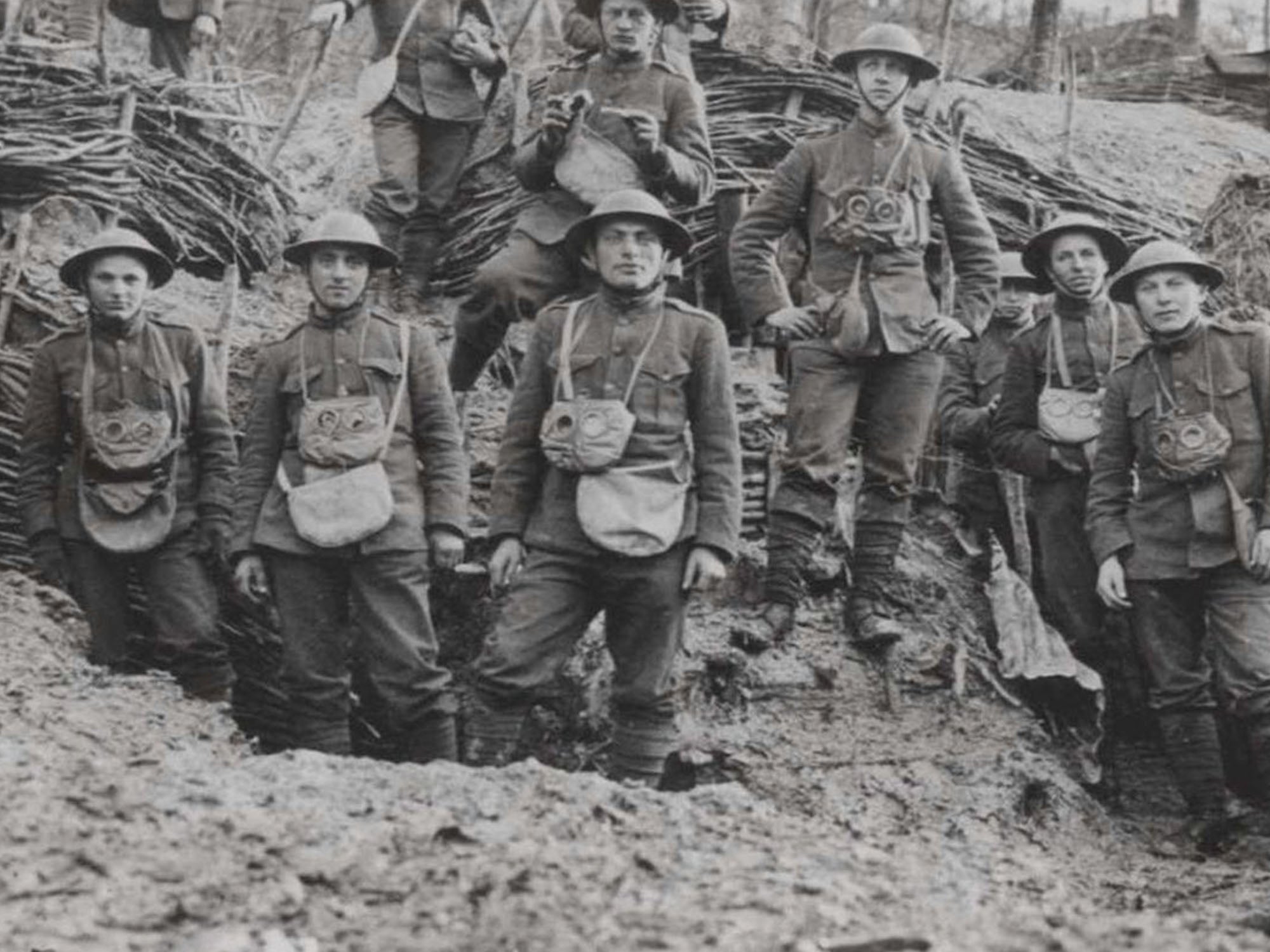
According to some historical accounts, it was Commander (later Field Marshall) Alan Brooke, a high ranking British officer and advisor to Winston Churchill, who proved instrumental in developing the guidelines for a “perfect soldier’s watch” that would replace repurposed civilian watches on the battlefield. Here are the specifications set forth, and largely adhered to, by every timepiece made for the British Royal Air Force and Royal Navy that are today considered part of the Dirty Dozen: black dial with Arabic numerals; small seconds at 6 o’clock; railroad-style minute track; luminous hour and minute hands and indexes; a proven precise movement, preferably regulated to chronometer standards; hand-wound movements with 15 jewels; a shock-resistant, water-resistant case with shatterproof plexiglass crystal; and a waterproof, easy-grip crown for use with gloves. Watches were still being made in Great Britain at the time, but most British manufacturing firms of all types had been conscripted to shift their production to goods more directly beneficial to the war effort. So, to make the watches, the British Ministry of Defence (MoD) reached out to 12 leading Swiss watchmakers of the time, some of whose names are familiar, others less so: Buren, Cyma, Eterna, Grana, Jaeger-LeCoultre, Lemania, Longines, IWC, Omega, Record, Timor, and Vertex. (Technically, Vertex was the only British company represented, but its factories were in Switzerland.)
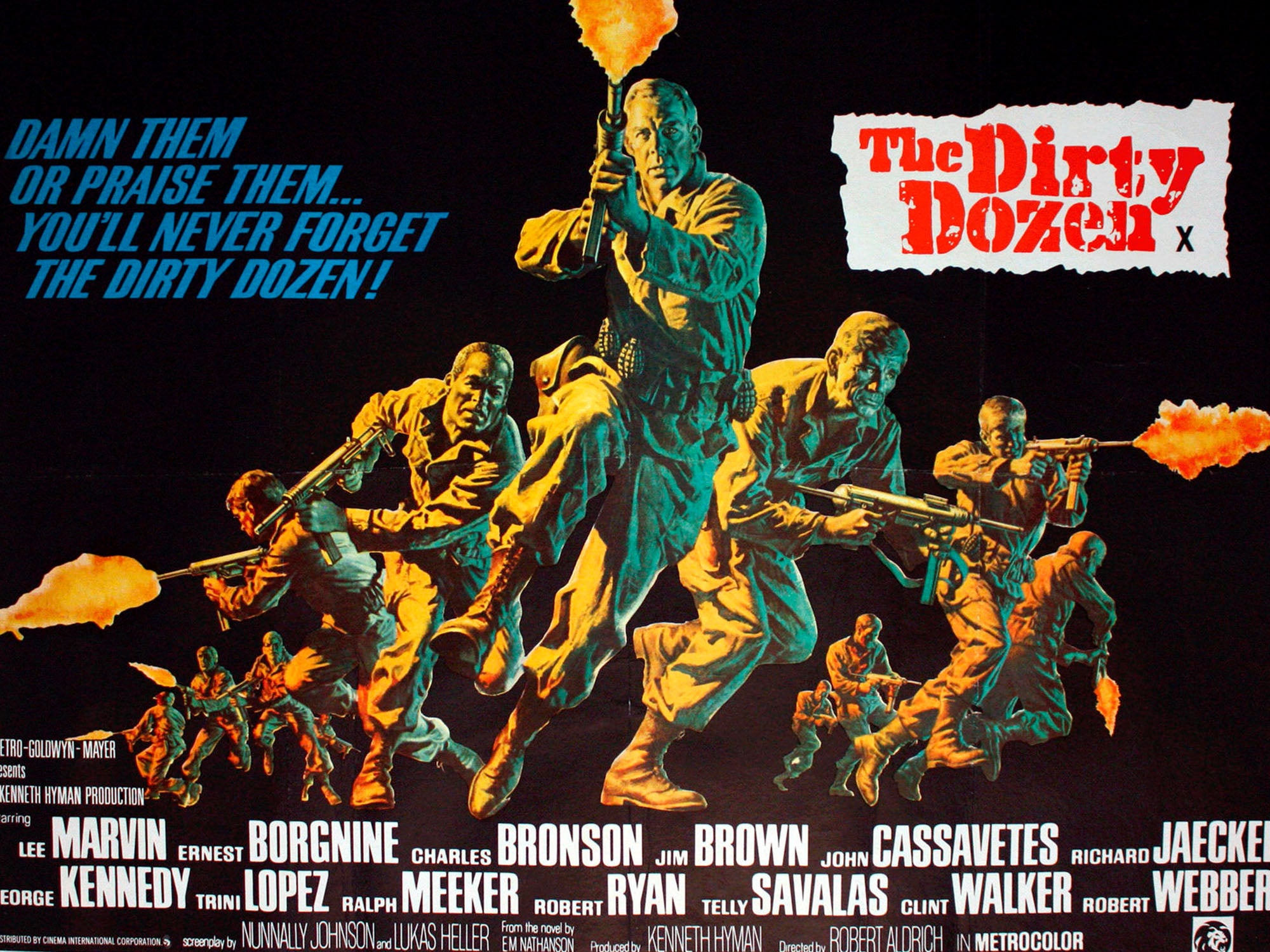
All the watches’ casebacks were stamped with “W.W.W.” — the all-important initials that denoted them as “Watch, Wrist, Waterproof” — and the Broad Arrow emblem, rooted in British heraldry, that was traditionally used to denote the property of the U.K. government. The casebacks also carried an engraved military serial number consisting of a capital letter followed by five digits. The Broad Arrow, which is derived from the family coat of arms of Sir Philip Sidney, Joint Master of Ordnance circa 1585, also appears on the dials, right below the individual brand logo. The watches were produced within a very short period, between 1944 and 1945, after which the end of the war eliminated much of the demand for them. Today, this selection of military watches has become known in horological legend and lore as the Dirty Dozen, a name derived from the 1967 World War II movie starring tough-guy Hollywood icons Lee Marvin and Charles Bronson.
The design of the Dirty Dozen lives on today in a number of military-styled timepieces, even though some of the watch manufacturers that produced them are no longer around; IWC’s Pilot’s Watch Spitfire series, in fact, can trace its lineage directly to a Dirty Dozen watch. For enthusiasts and collectors of vintage military watches, owning the entire Dirty Dozen — i.e. one watch from each of the 12 manufacturers, all from the original wartime production run — represents a Holy Grail. The watches varied widely in their production numbers, and some are much harder to acquire than others. On August 24, 2020, Fellows Auction House in Birmingham, U.K., auctioned all 12 of the Dirty Dozen in a full boxed set, with a final hammer price of 27,000 GBP. There are said to be only about 20 full sets of the Dirty Dozen in existence today, all containing one example each from the 12 following brands.
Buren
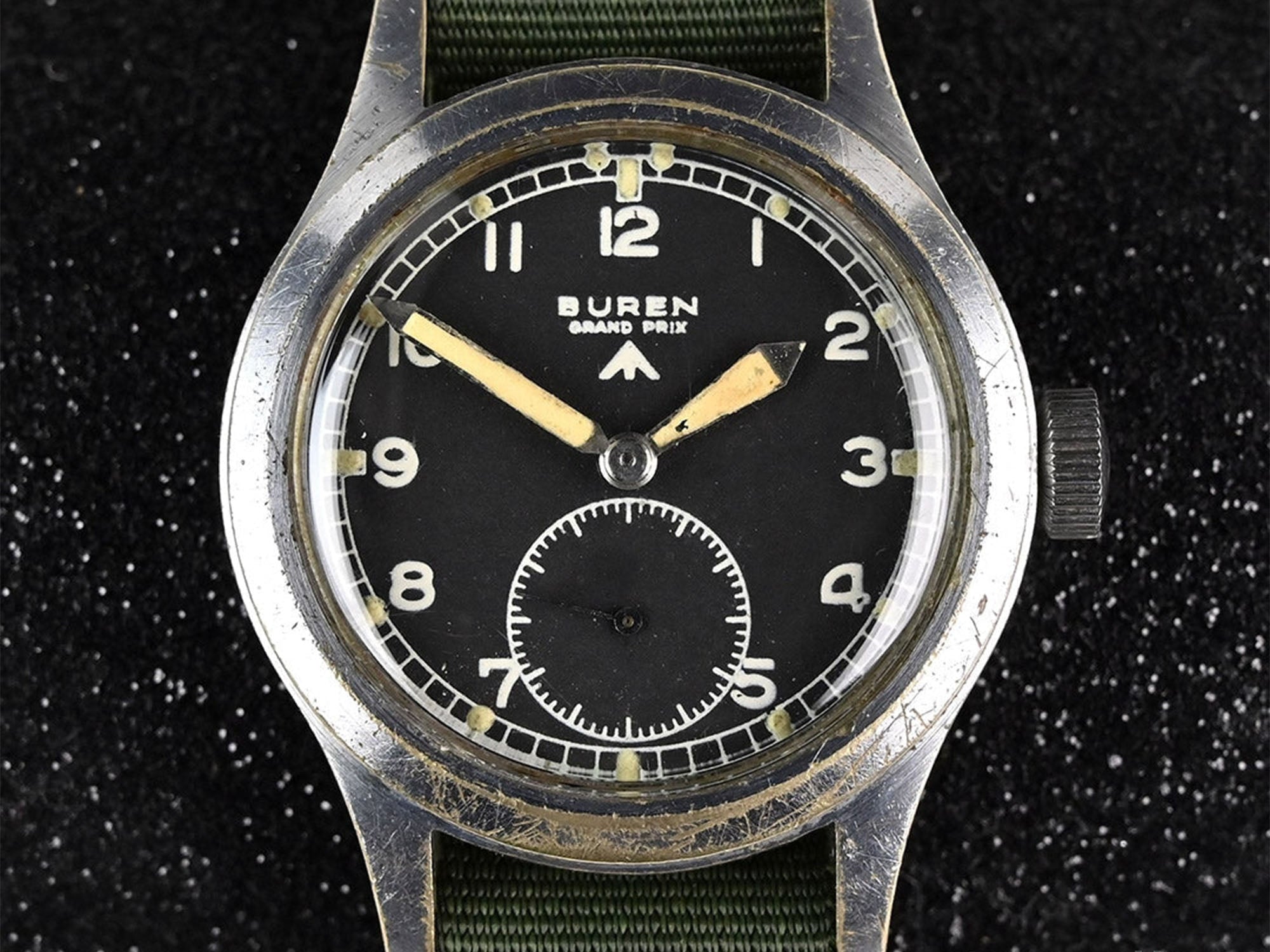
Buren Watch Company was founded in the Swiss canton of Bern in 1898, owned and operated by London-based H. Williamson Ltd. primarily as a maker of pocket watches and table clocks. In 1966, Swiss-based Buren became part of Hamilton Watch Co., which at the time was still based in the U.S.A., and quickly became the manufacturer of the majority of Hamilton watches, effectively accelerating the end of domestic production for the historical American brand. The merged Hamilton-Buren firm was one of a handful of pioneering Swiss watch manufacturers, along with Heuer and Breitling, that developed the groundbreaking Chrono-Matic caliber in 1969, one of the world’s first self-winding chronograph movements. In 1971 it became part of the SSIH group and eventually the Swatch Group. Hamburg-based Schweizer Uhren Edicionen acquired the Buren brand and operates it today. Buren’s chrome-finished watch measured 36.5mm, with sword hands, and carried the Caliber 462 “Grand Prix” movement, which the company made in-house. (Photo: Vintage Watch Specialist)
Cyma
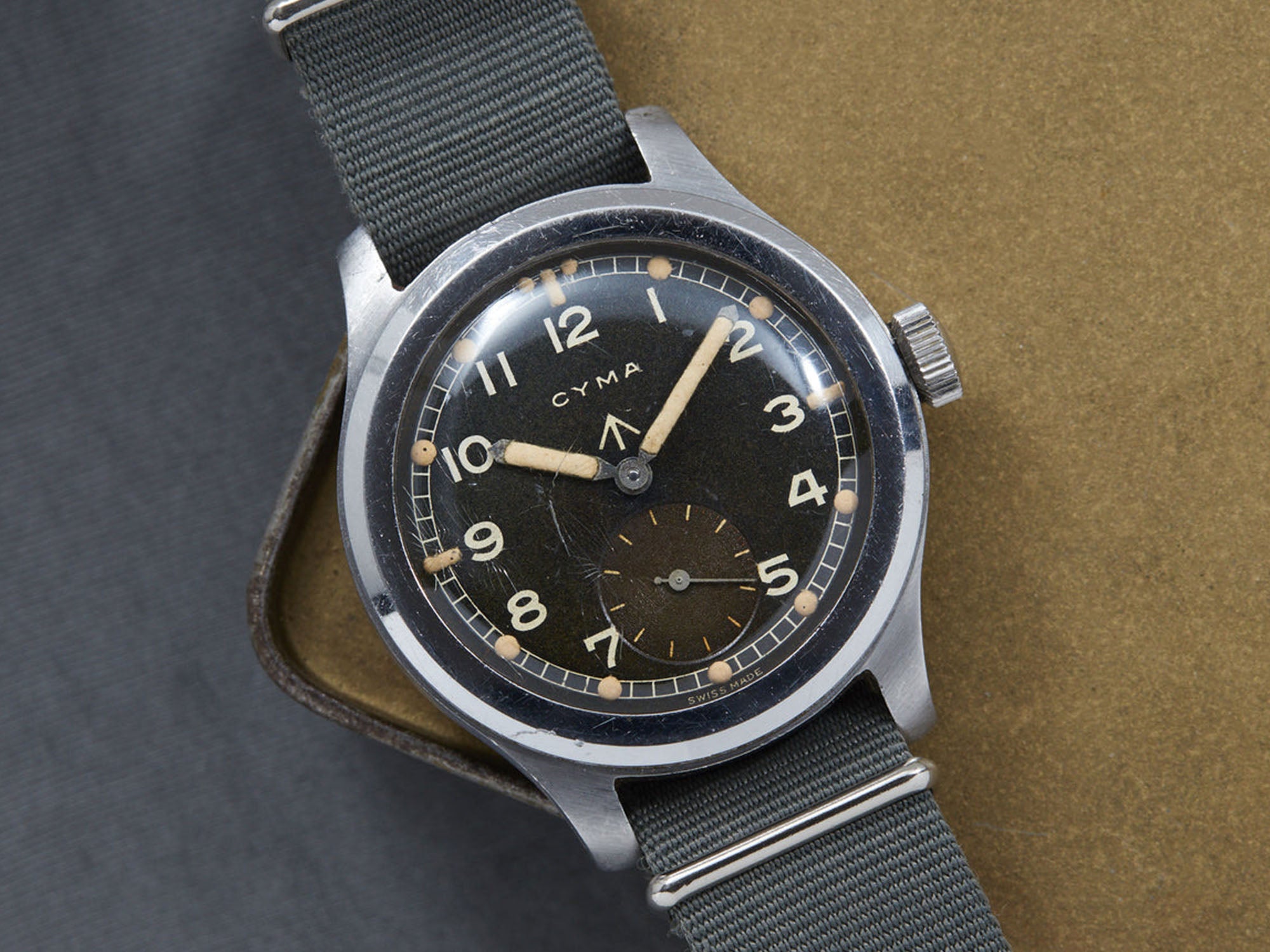
Brothers Joseph and Theodore Schwob founded Cyma in 1862, taking the name from the Latin word for “sprout,” which evolved into the French word for “summit” (cime). It made luxury watches touted for their resistance to electricity, magnetism, and temperature extremes at its factory in La Chaux-de-Fonds and became known for its expertise in high complications like minute repeaters. Today, still based in Switzerland, the company is owned by Hong Kong-based Stelux International Ltd. Despite its relatively healthy production run compared to others (20,000 pieces, according to estimates), Cyma’s Dirty Dozen Watch is a favorite of many due to the sizing of its case (a somewhat contemporary 37mm) and its construction in stainless steel, a quality material that was rare at the time due to wartime shortages. Inside is the mechanical Caliber 234, with 15 jewels. (Photo: Analog Shift)
Eterna
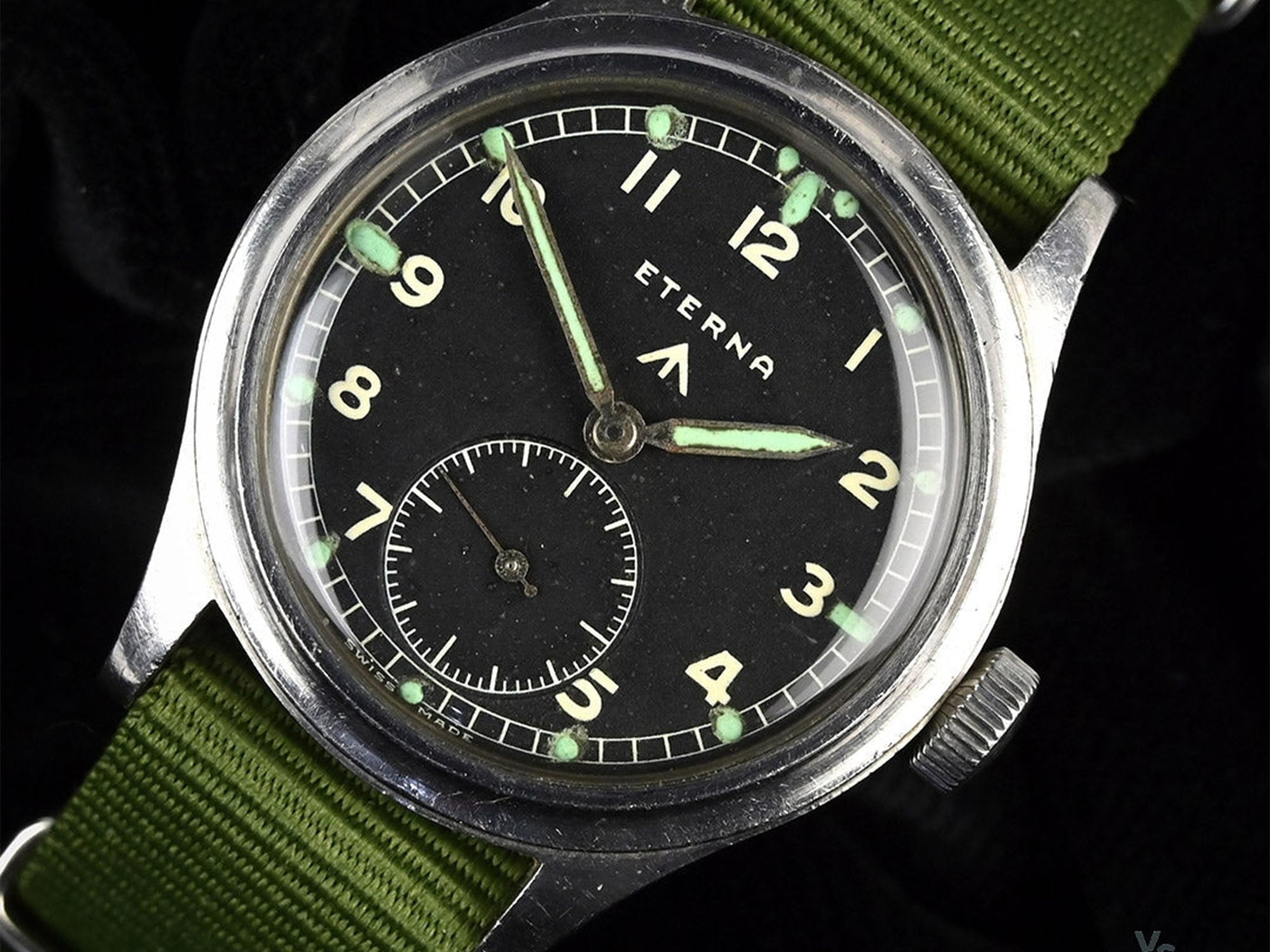
Founded in 1856, Grenchen-based Eterna can lay claim to many watchmaking milestones but is renowned mainly for providing the foundation of today’s ETA movement-manufacturing giant: the co-founding Schild family were the technical innovators who set up the subsidiary ETA SA in 1932, which is today part of the Swatch Group and a major pillar of the Swiss watch industry. Outside of that, Eterna is known for the release of the pioneering Kon-Tiki divers’ watch, inspired by explorer Thor Heyerdahl’s legendary Polynesian raft expedition in 1947; for the development of the Eterna-Matic movement in 1948, the first caliber with a friction-reducing ball-bearing rotor system; and for one of the first wristwatches with a mechanical alarm. Today, the venerable firm is owned and operated out of China by Citychamp Watch and Jewellery Group. Eterna’s Dirty Dozen watch (36mm in stainless steel, with the manually wound in-house Caliber 520) is among the rarest, with only 5,000 or so pieces ever made. (Photo: Vintage Watch Specialist)
Grana
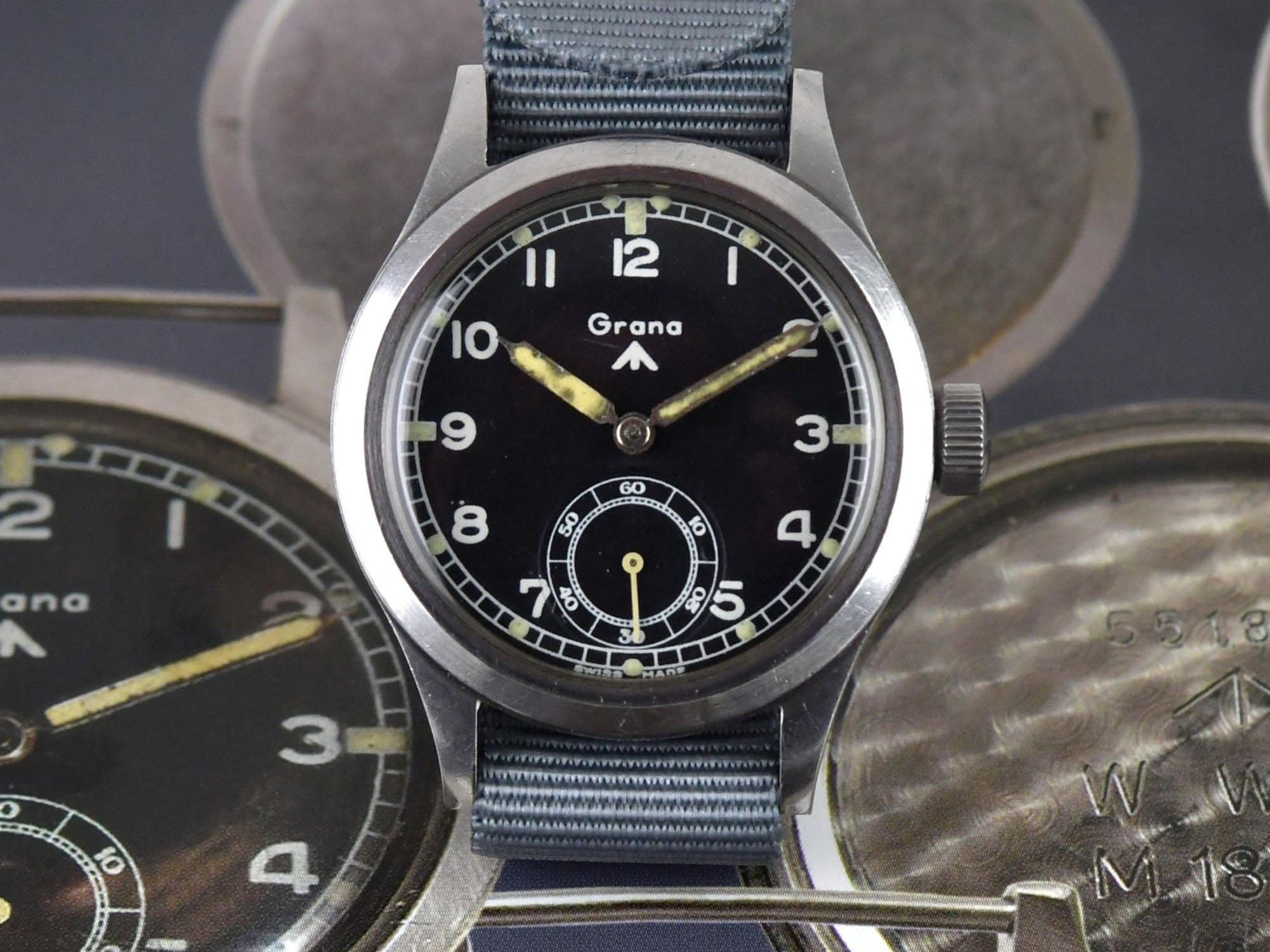
Grana is a name you won’t find on a watch dial these days, because in the 1940s this Grenchen-based watch manufacturer, founded in 1888 by the Swiss Kurth brothers Adolf and Alfred, became known as Certina. While far from the most famous brand name on this list, Grana has the distinction of making the rarest and thus most coveted timepiece in the Dirty Dozen, the Holy Grail of the Holy Grails. No one’s sure how many were produced, but the number is almost certainly fewer than 5,000 and maybe as few as around 1,000. In April 2022, a Grana watch from the Dirty Dozen sold at auction for 12,000 GBP. (Photo: Vintage Watch Specialist)
Jaeger-LeCoultre
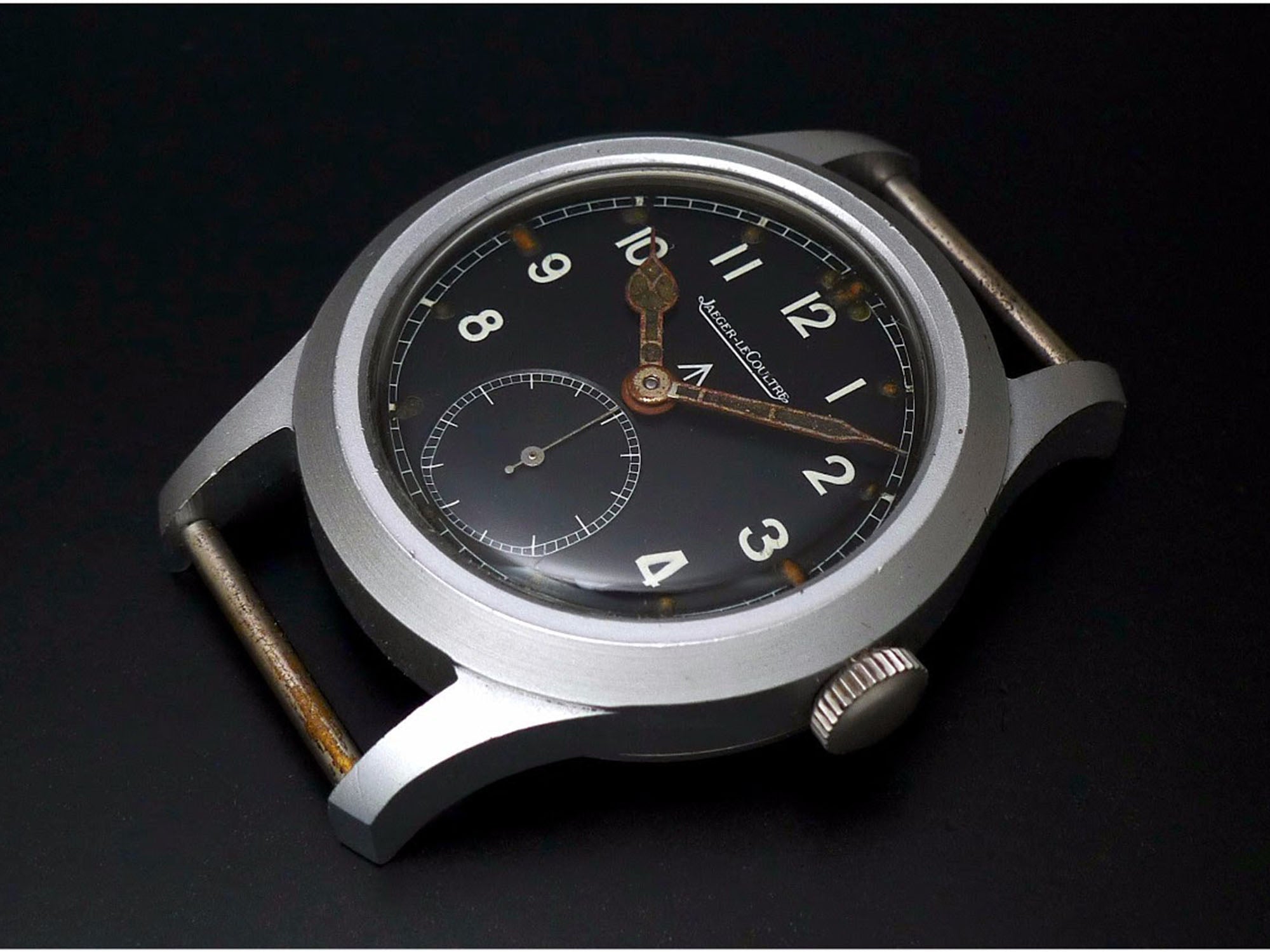
Jaeger-LeCoultre, established in 1833 in the heart of the Vallée de Joux in the Swiss Jura, has been called “The Watchmaker of Watchmakers,” and the maison has worked hard to earn the reputation, producing more than 1,242 in-house calibers over its long history — and for much of that history supplying some of them to other major heritage brands like Patek Philippe and Vacheron Constantin. Jaeger-LeCoultre’s most iconic watch is undeniably the Reverso, made since 1931 and recognizable by its swiveling, reversible case, which was initially conceived as a sports watch for polo players to wear during matches. Another signature innovation from Jaeger-LeCoultre came in 1968: the Polaris Memovox, a diver’s watch equipped with a mechanical alarm, which exerts its aesthetic and technical influence on an entire collection of Polaris sport-luxury models today. Jaeger-LeCoultre’s watch for the MoD during World War II weighed in at a relatively modest 35mm (17mm lug width), with a steel caseback and chrome bezel, and cathedral hands rather than the sword hands on most of its siblings. Like virtually all Jaeger-LeCoultre watches then and now, it contained an in-house movement, the manually wound Caliber 479. (Photo: WatchPro)
Lemania
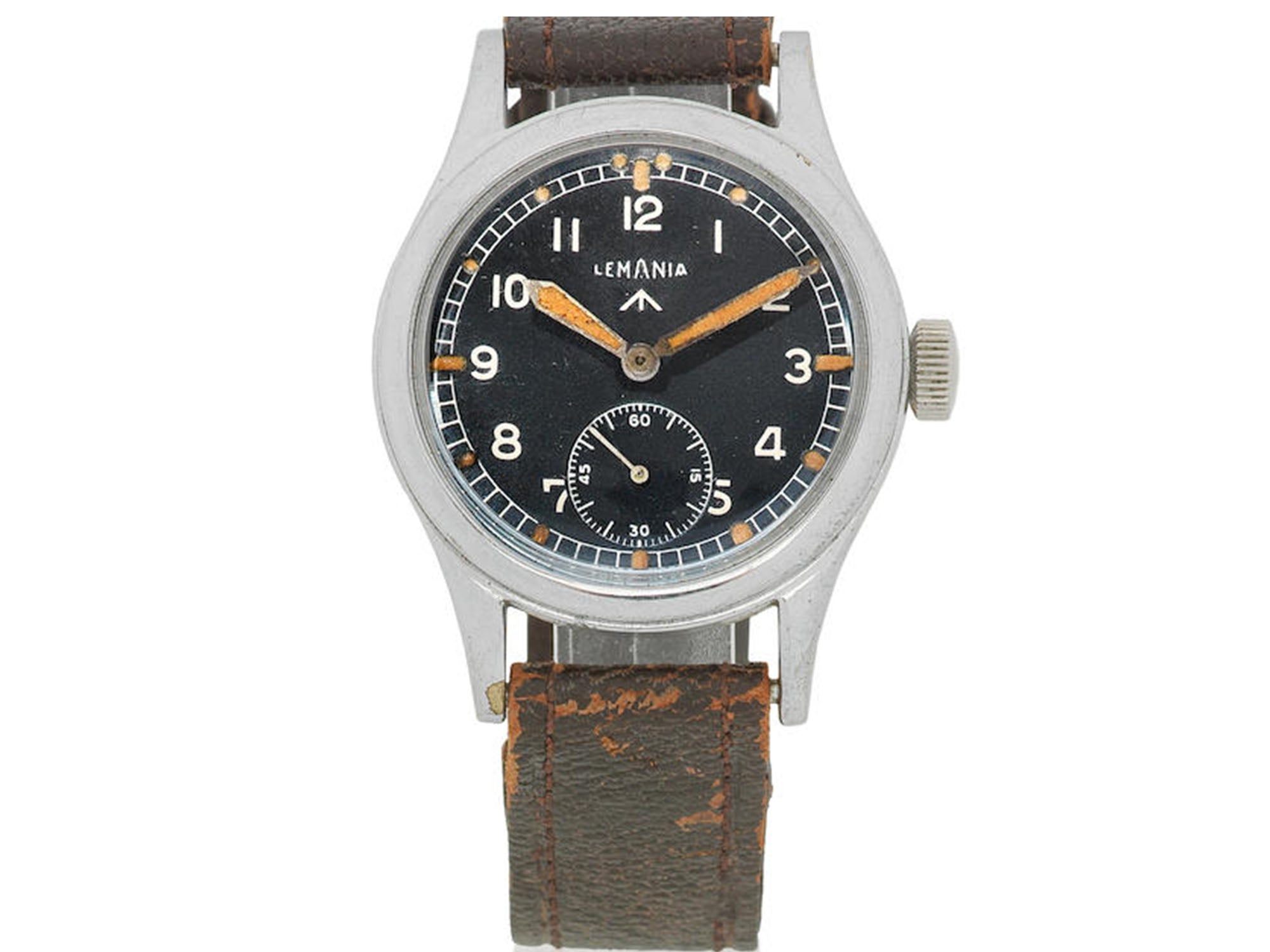
Before it became renowned for producing high-end movements for Omega, and eventually Breguet, Lemania, founded in 1884, made its own watches. After merging with Omega and Tissot to form the SSIH Group in 1932, Lemania (which took its name from Switzerland’s Lac Leman, or Lake Geneva) focused most of its efforts on developing complicated calibers for its partners, including the one that went to the Moon in the Omega Speedmaster. When called upon, however, Lemania built a military wristwatch to the WWW specs for the British Army, of which only about 8,000 were ever made. The watch’s steel-and-chrome case measured 36.5mm in diameter and contained the manually wound Caliber 27A. (Photo: Bonhams)
Longines
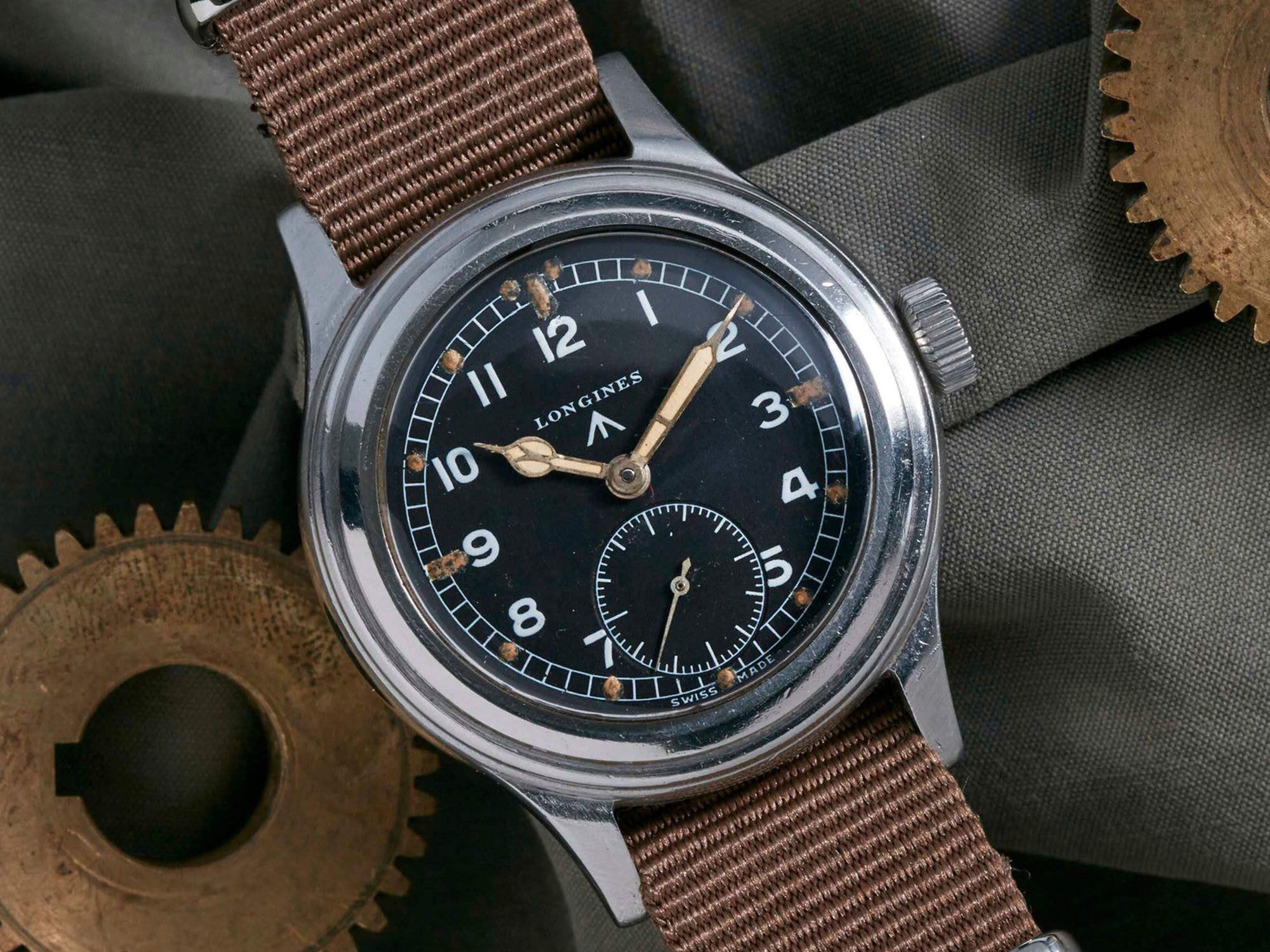
Headquartered in Saint-Imier, Switzerland since its founding in 1832, Longines takes its name from “les longines,” the “long meadows” that surround that picturesque Swiss village. The brand has been a pioneer in sports timing and a one-time Olympic Games timekeeper. The company also looks back on an enviable history of involvement in early aviation, designing the legendary Hour Angle watch with Charles Lindbergh in 1931 and supplying watches to pilots like Howard Hughes, Amy Johnson, and Amelia Earhart. Longines was also one of the first Swiss brands to embrace quartz technology in the 1950s, and remains in that game with its line of Conquest VHP (Very High Precision) quartz-powered models. Longines’s contribution to the Dirty Dozen, Ref. 23088 in stainless steel, has been nicknamed “The Greenlander” due to a long-held (though ultimately debunked) belief that it was worn on the British North Greenland Expedition in 1952-1954. Its 38mm size and cathedral handset distinguish it from the others and make it a favorite of many. (Photo: Analog Shift)
IWC
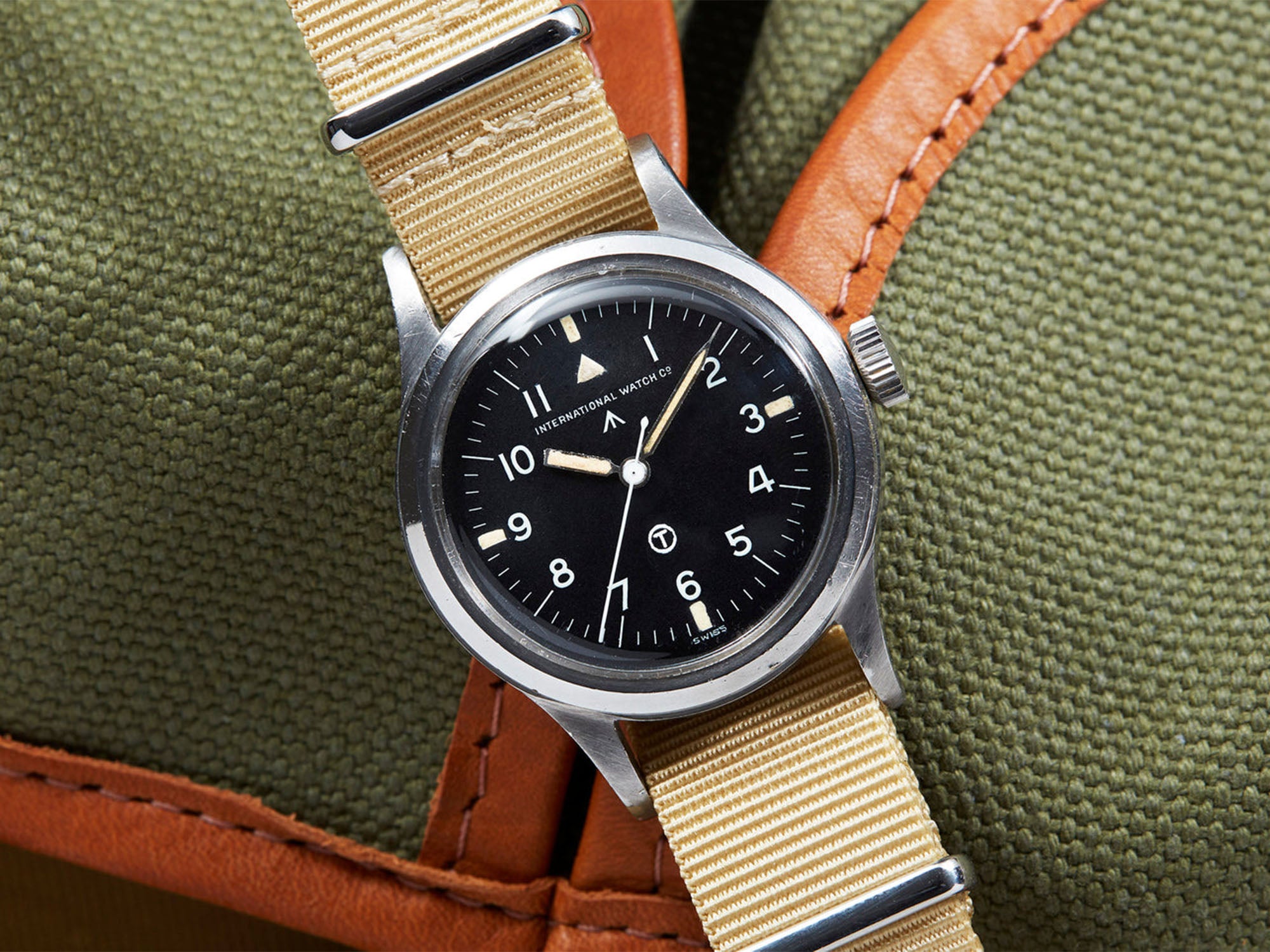
Notably the first and still only Swiss watch firm founded by an American (New England watchmaker Florentine Ariosto Jones), IWC is also one of the few watchmaking houses headquartered in Schaffhausen, in Switzerland’s northeastern, German-speaking region. Originally a maker of ornate pocket watches, IWC is most famous today for its family of aviation watches, like the Big Pilot’s watch, first worn by Luftwaffe pilots during World War II; the Spitfire series, based on the Mark 11 worn by British RAF pilots in the 1950s (pictured above, via Analog Shift); and the Top Gun collection, made in cooperation with the U.S. Navy Fighter Weapons School. The Spitfire pilot’s watch draws its direct lineage from IWC’s Mark X, the field watch that it produced in 1944-45 as part of the Dirty Dozen. The 35mm steel case contained the Caliber 83, protecting it behind a snap-on caseback, the only one of this type used for a Dirty Dozen watch. The watch is one of the most collectible of the twelve, with a fairly small production run around 5,000 pieces.
Omega
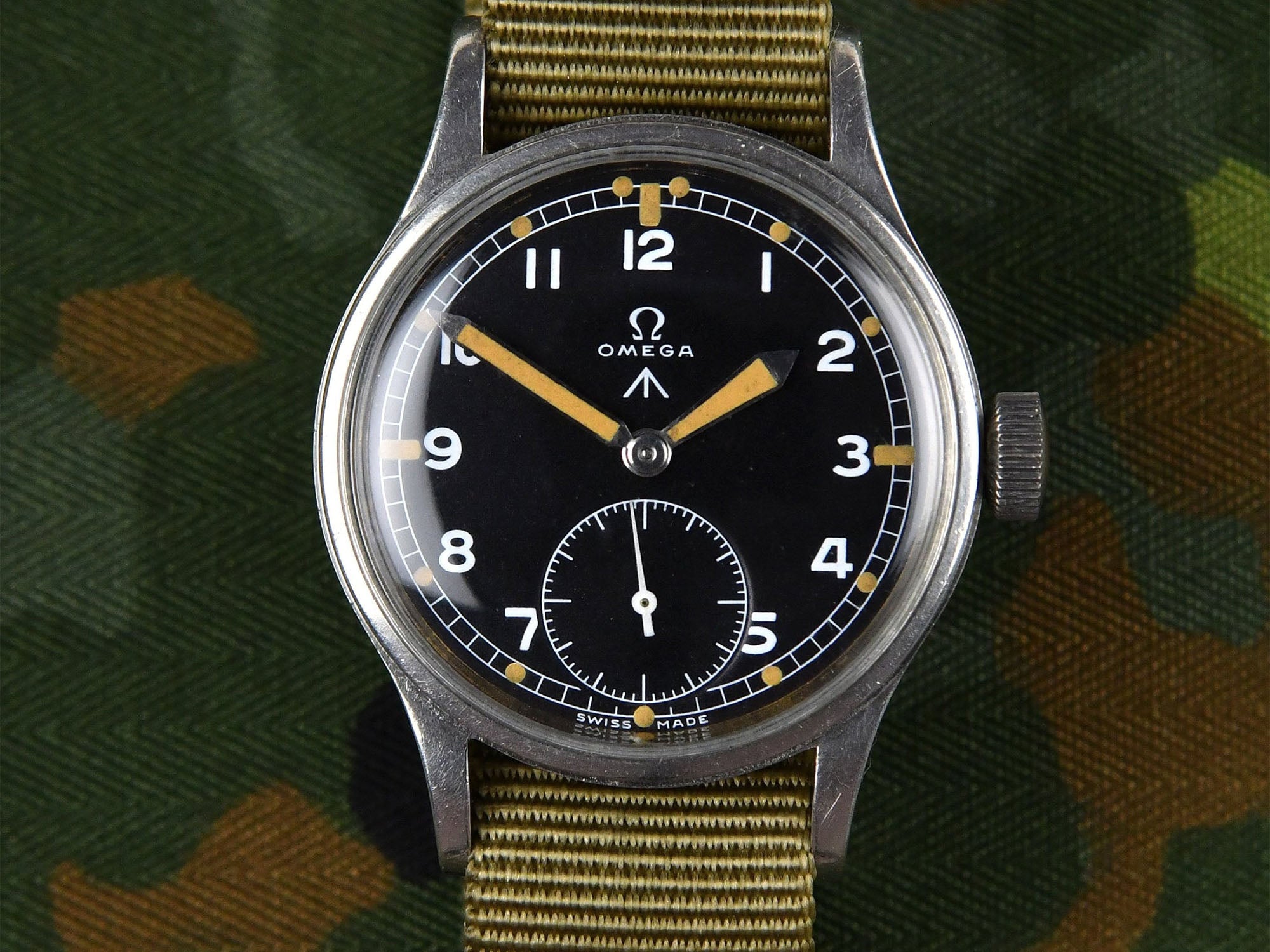
Few Swiss luxury watch brands have had more historical impact on our popular culture than Omega, founded by Louis Brandt in 1848. One of the watch industry’s most trend-setting leaders, Omega created some of the first minute repeaters and tourbillons for the wrist, and was the first to use the revolutionary co-axial escapement in its calibers. By far its best known watch model is the Speedmaster Professional, aka the “Moonwatch,” which in 1969 became the first watch worn on the moon and has been a mainstay of NASA space missions ever since. Omega has been a timing partner of the Olympics since 1932 and regularly releases collectible special editions in concert with the Games. Since 1995, Omega has been the official watch of James Bond, with both Pierce Brosnan and Daniel Craig sporting the naval-inspired Seamaster model in various iterations on the big screen. Omega’s Dirty Dozen model measured 35mm in steel, and contained the manually wound Omega Caliber 30T2. It remains one of the more collectible models, not because of its rarity — it’s estimated about 25,000 were produced — but because of the always powerful Omega brand name. (Photo: Vintage Watch Specialist)
Record
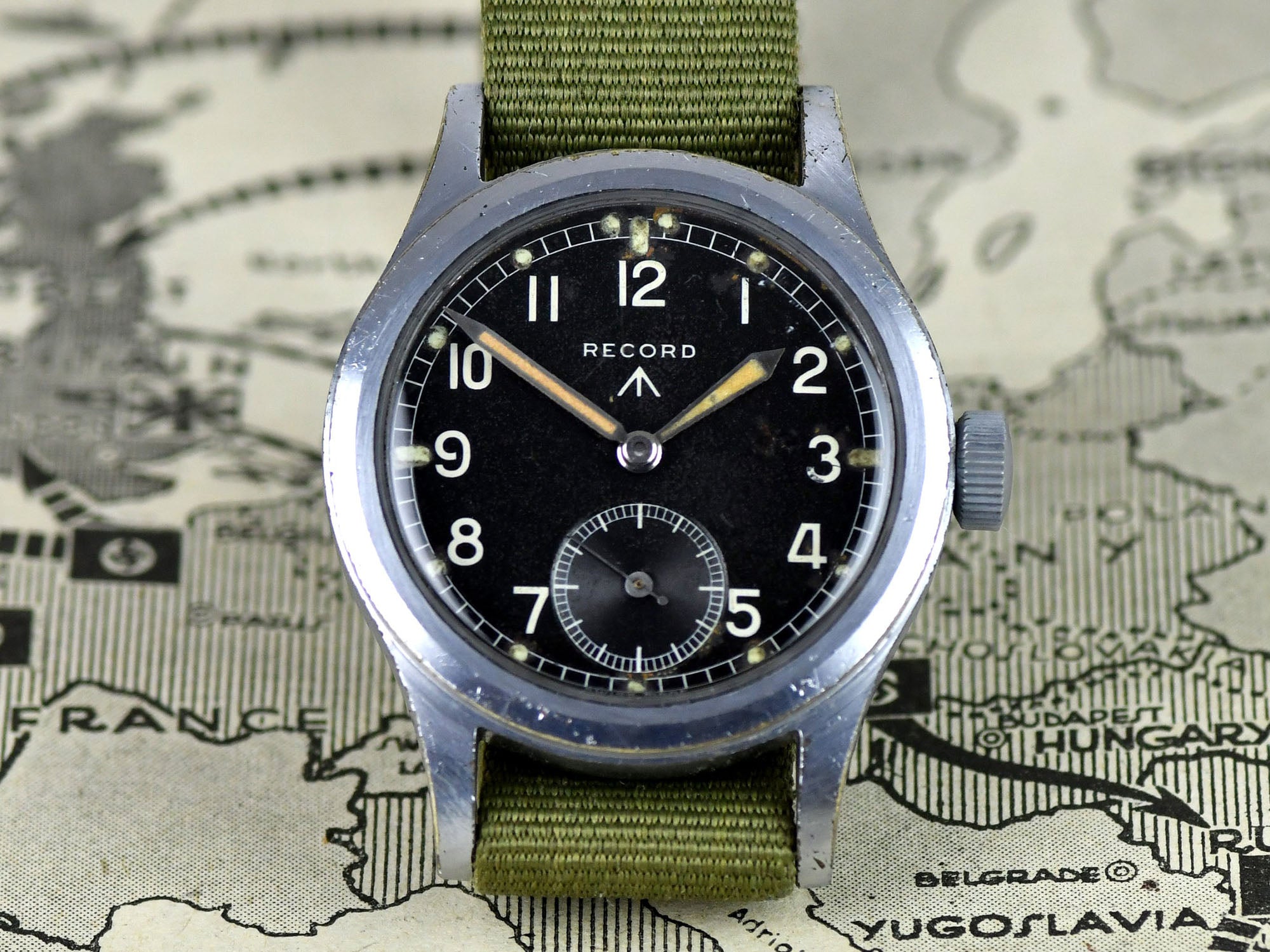
Wait, isn’t the Record a watch model produced by Longines? Well, yes and no. The Record Watch Co. was founded in the Swiss Jura Mountains in 1903 and was known as the maker of the popular, triangular “Sector” pocket watch before delving more deeply into wristwatches in the early 20th Century, including high-end chronographs in the 1930s. After World War II, Record continued making innovative complications like an in-house calendar with moon-phase, the Datofix, in 1949. Longines absorbed the Record brand in the 1960s and discontinued its operations in 1991; recently, Longines has resurrected the Record style in a series of vintage-flavored models under the Longines brand umbrella. The Dirty Dozen watch produced by Record measured 36.5mm in chrome-plated steel and held the Caliber 022K behind its screw-on caseback. (Photo: Vintage Watch Specialist)
Timor
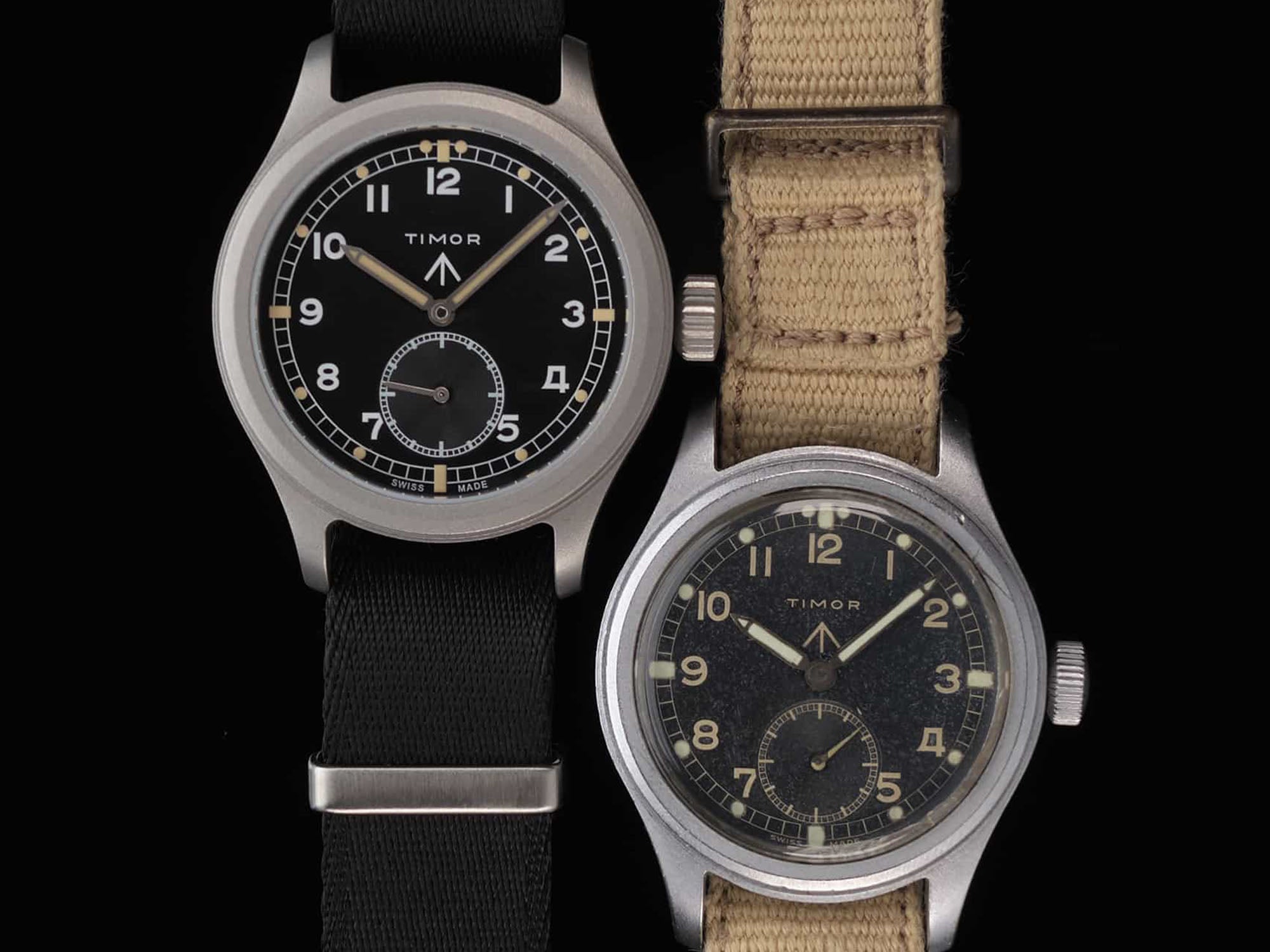
Timor started making watches in 1923 in La Chaux-de-Fonds and was noted for making one of the first watches for partially sighted people in 1931; the timepiece featured a hinged crystal over the dial and Braille numerals. The brand was popular in Britain and made one of the first wristwatches for the British Army, even before the W.W.W. specs that gave rise to the Dirty Dozen. Now headquartered in the U.K., Timor has returned to its roots after a dormant period during the Quartz Crisis to produce vintage-influenced pieces like the Timor Heritage Field, which evokes the look of its “W.W.W.” model from the 1940s, of which 13,000 are believed to have been produced. The original watch’s chrome-plated 36.5mm steel case contained the mechanical Caliber 6060 and its black dial hosted luminous pencil-shaped hands. The modern re-creation (above, next to the vintage Dirty Dozen model) has identical case dimensions and a hand-wound Sellita SW216-1 movement.
Vertex
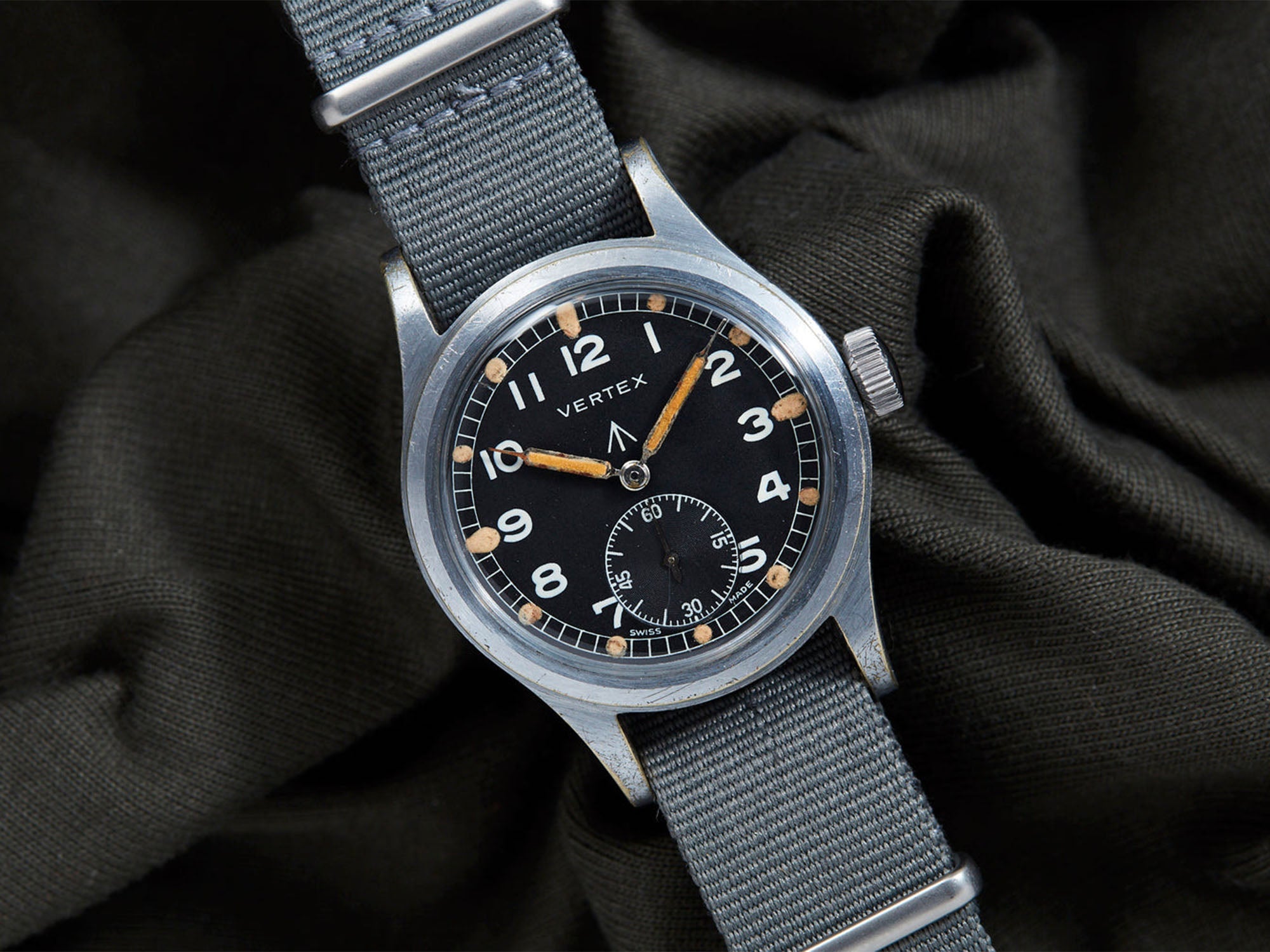
Specializing in making watches in Britain with Swiss-made movements, Vertex traces its origin to 1912, when founder Claude Lyons borrowed 1,000 pounds from his father and started making watches for British troops in World War I. By the 1920s, the company had a factory in La Chaux-de-Fonds and had expanded into other types of timepieces, like ladies’ jewelry watches. Henry Lazarus, Claude’s son-in-law, took over the company in 1938 and shortly parlayed his stint as an Army Captain into opportunities to provide watches to the troops. For the Dirty Dozen, Vertex contributed the chrome-topped, 35mm, Caliber 59-equipped W.W.W. Nav watch, which according to the modern brand was sent to troops preparing for the D-Day invasion in 1944. Vertex shut down in 1972 and reopened in 2015, run by Claude Lyons’ great-grandson. Like Timor, Vertex has revisited its Finest Hour of watchmaking during World War II to inspire its modern collection, including the heavily Dirty Dozen-inspired M100 series (above).
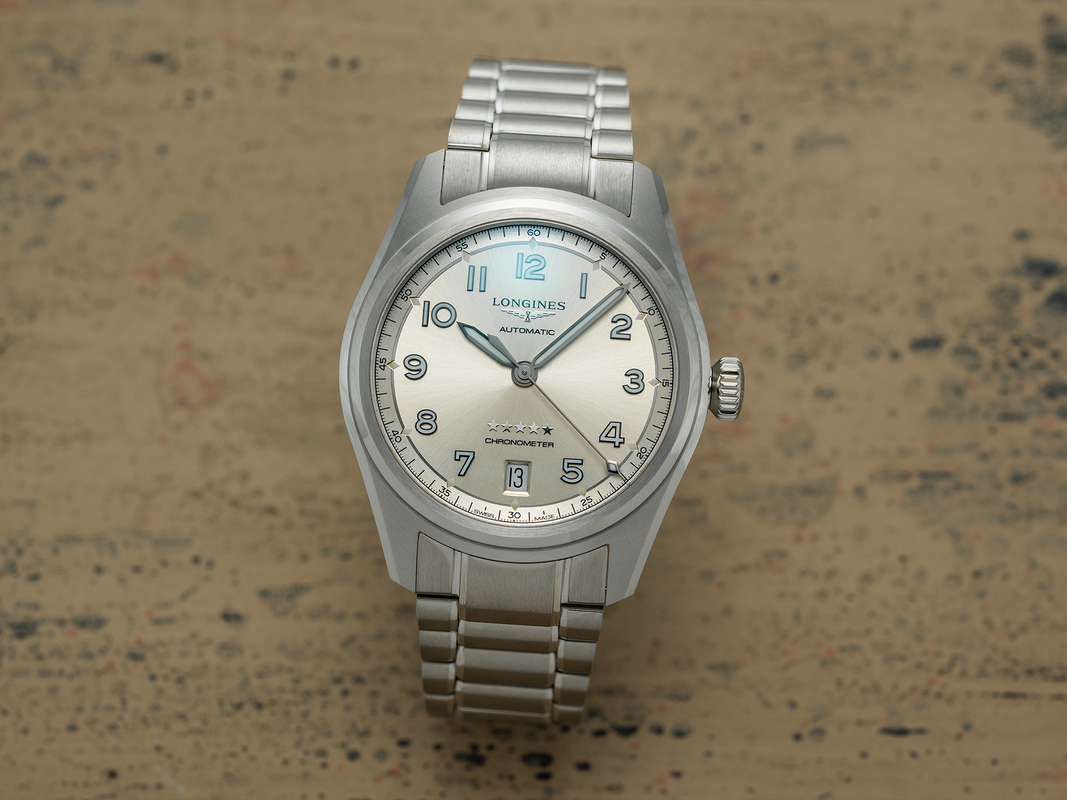

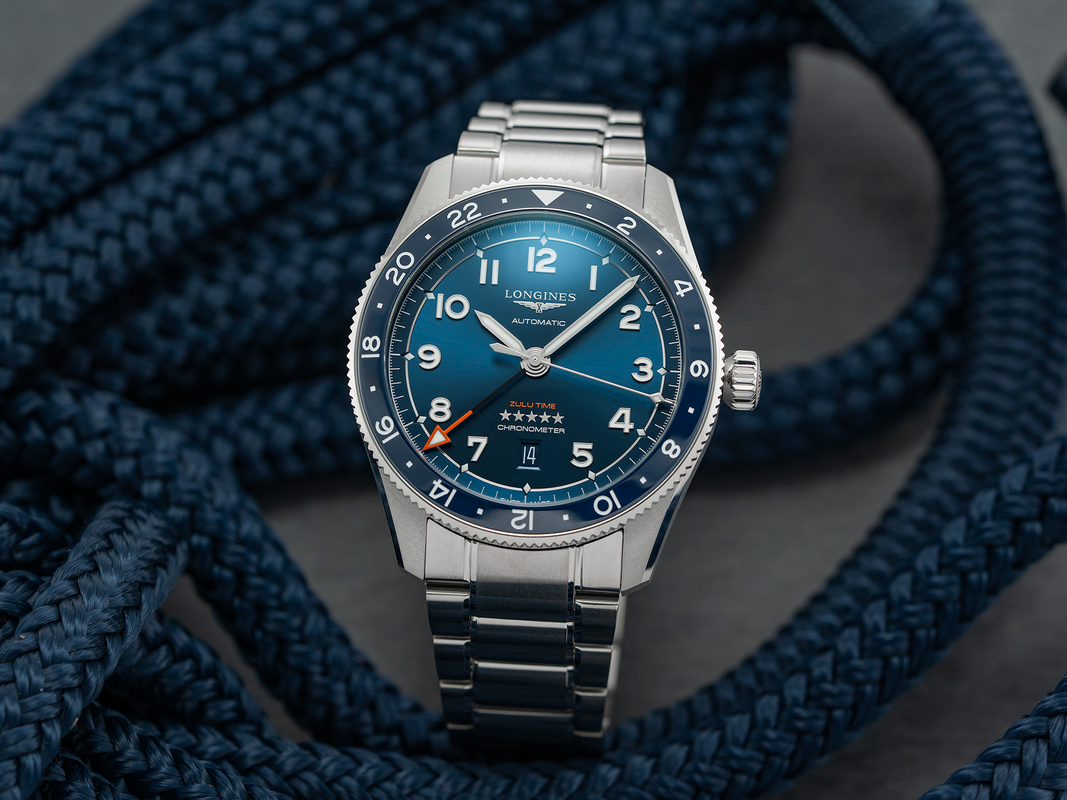
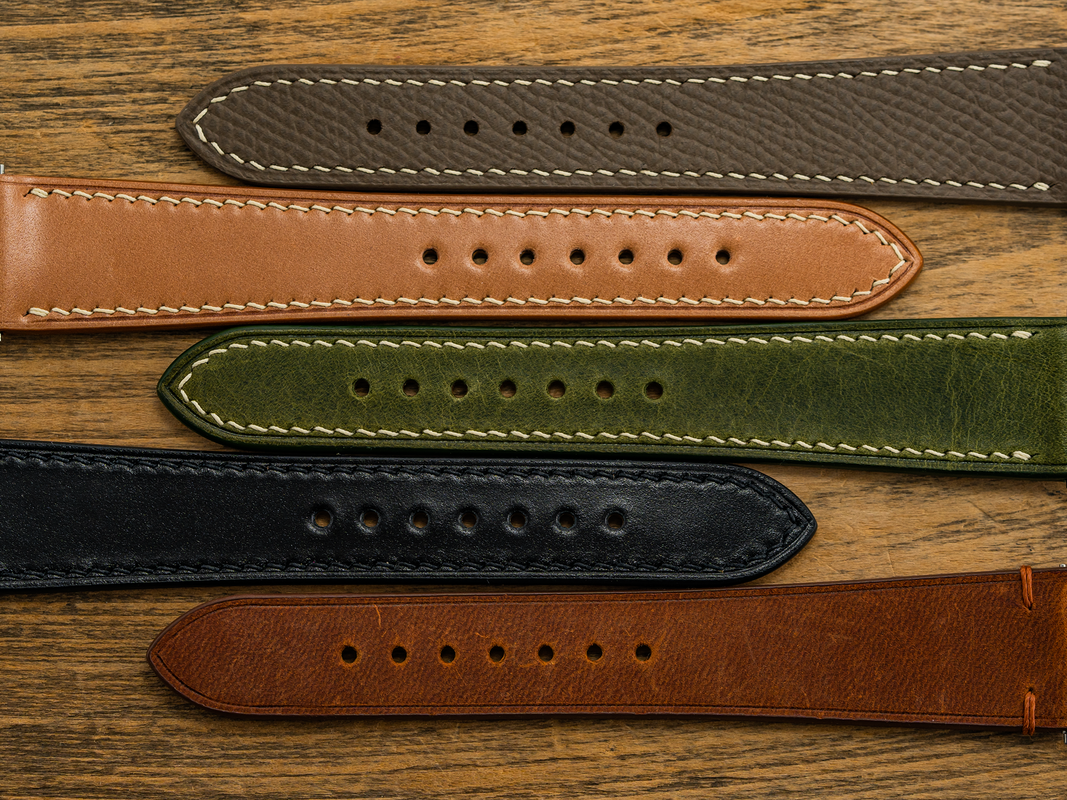
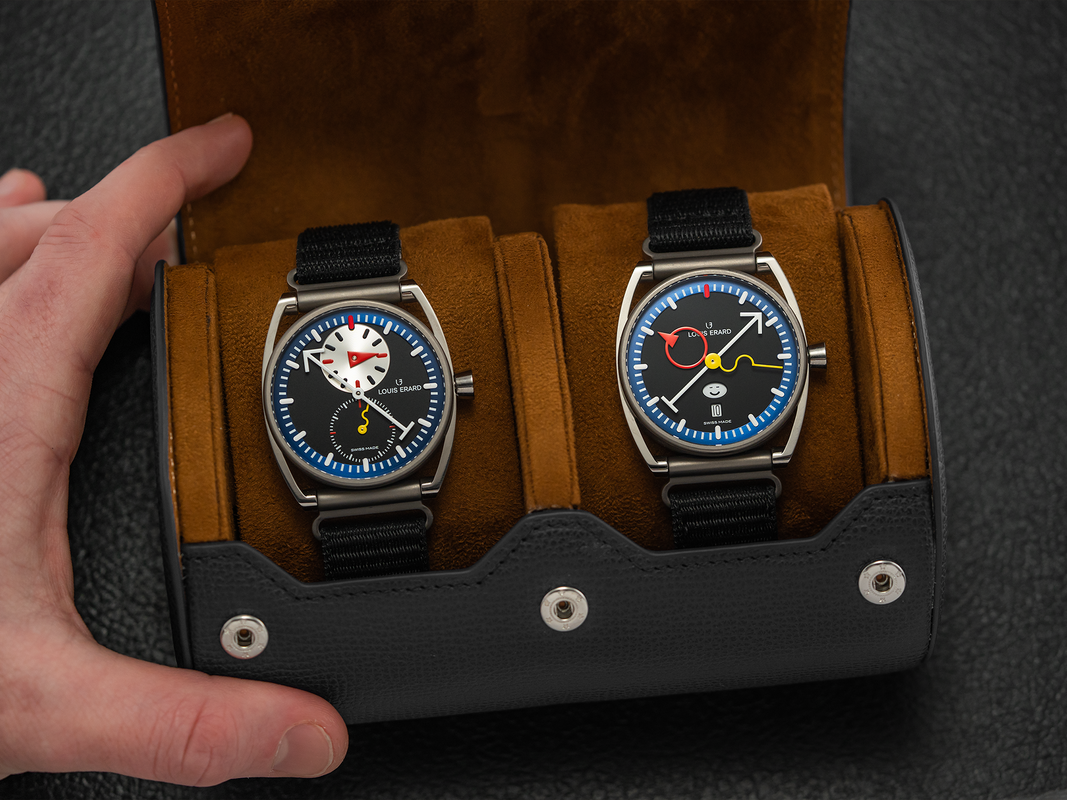
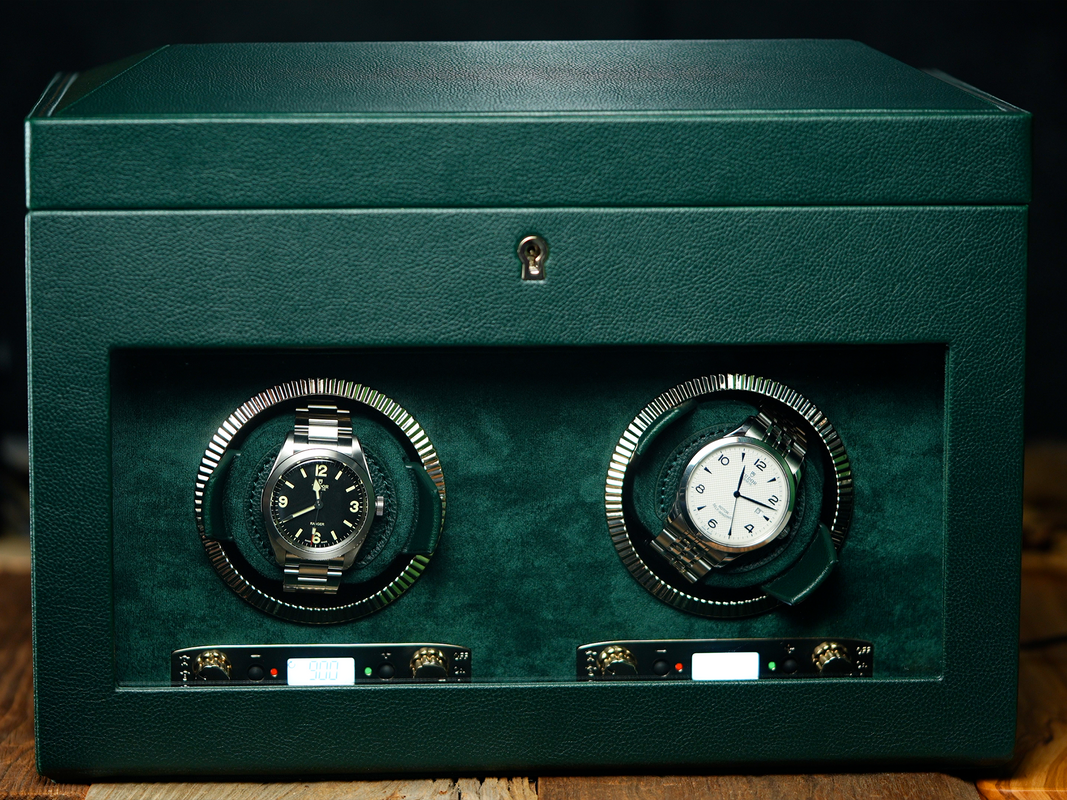
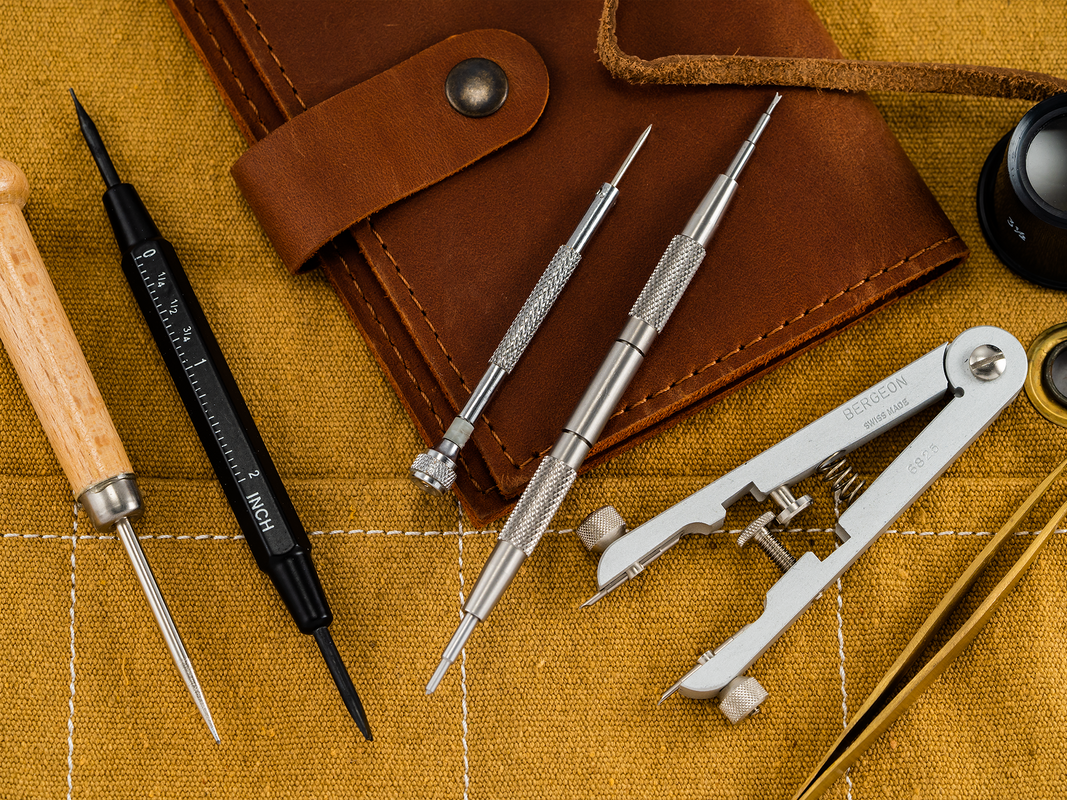

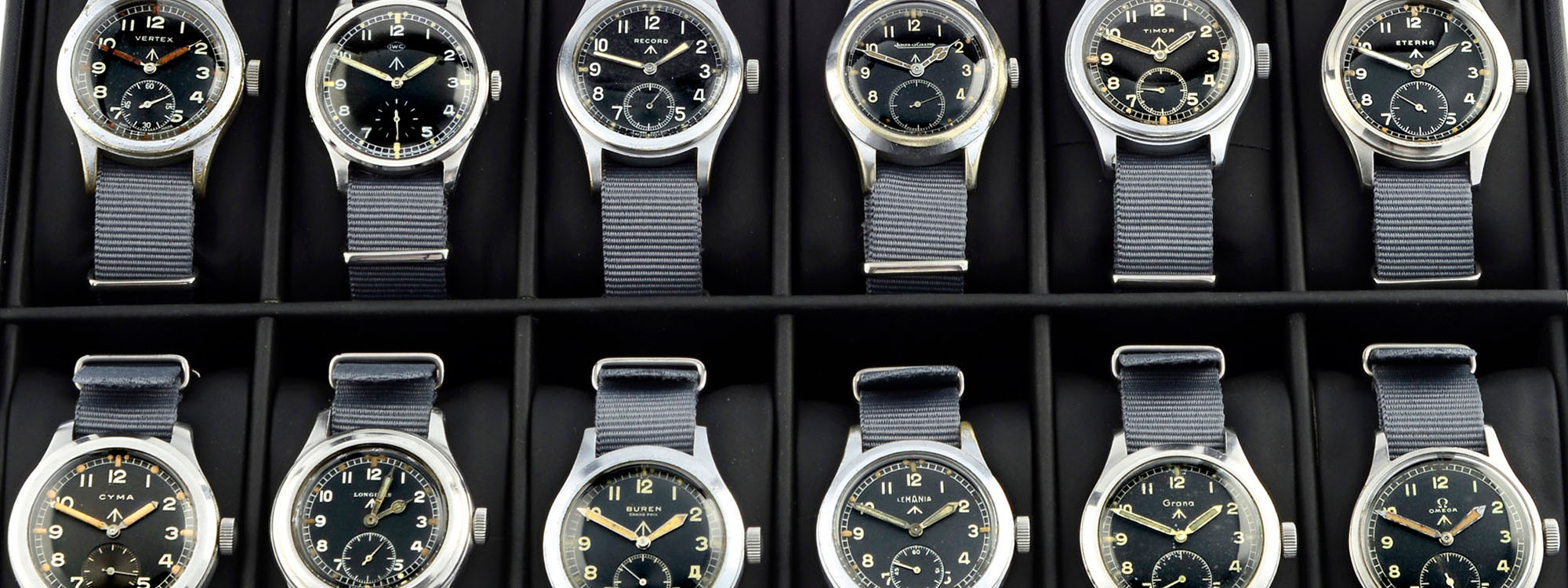


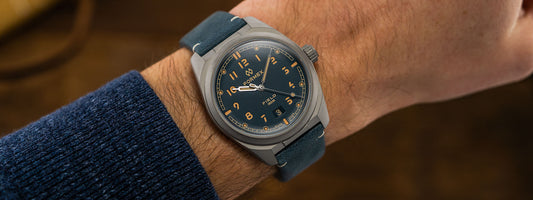
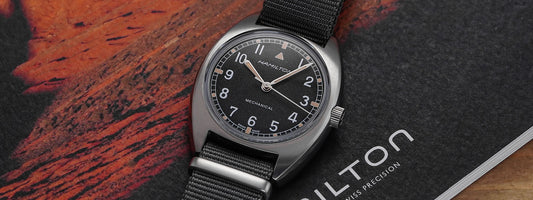

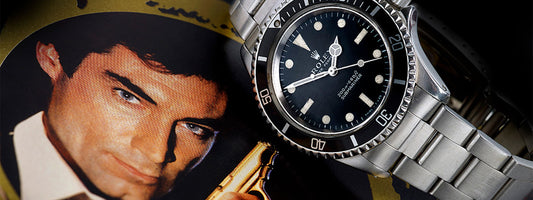
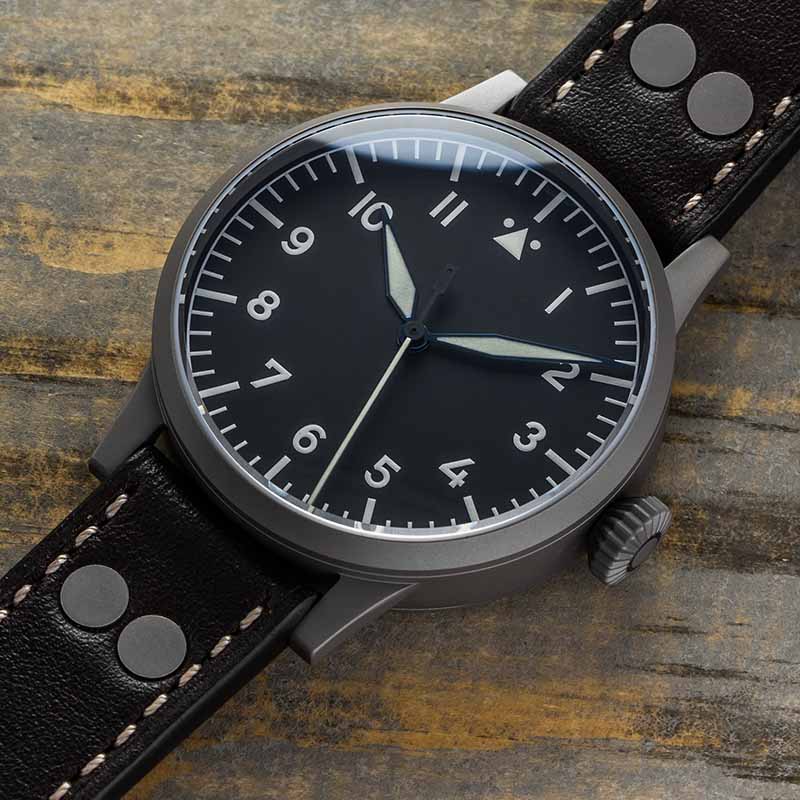
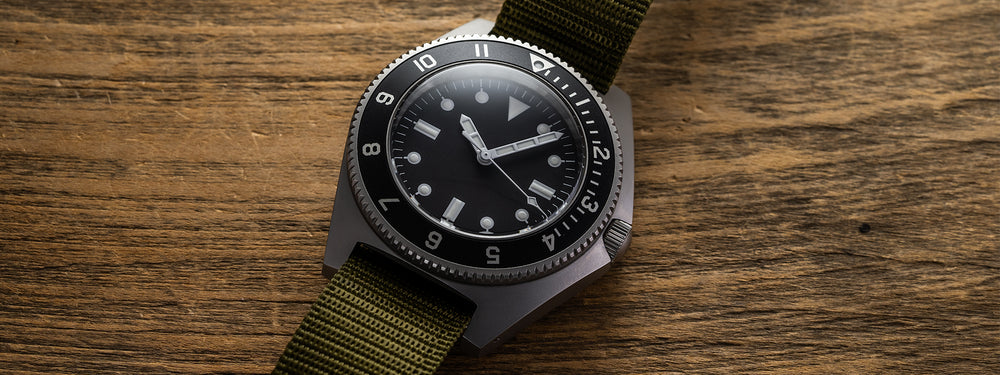
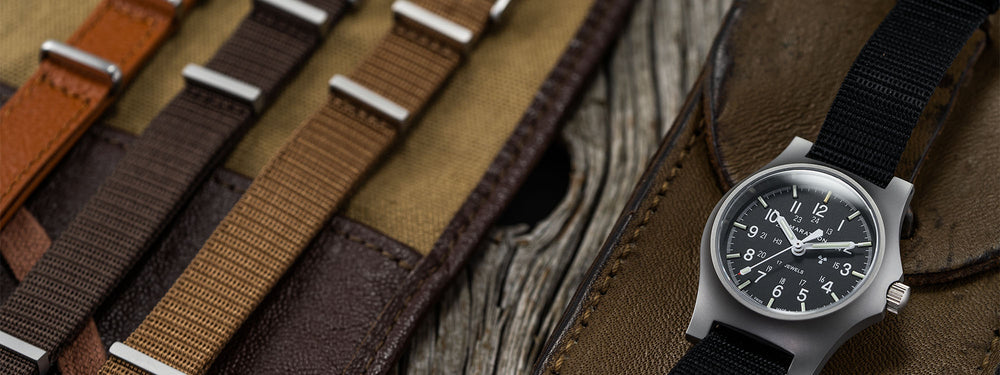


Join the Conversation
Teddy what would you be looking at for a modern or currently available Dirty Dozen WWW?
Very interesting article, Teddy. Time and space appear to be infinitely intriguing realities and or concepts. Thanks for sharing.
Hey Teddy, this is very well done. I would however suggest changing the title to the Swiss Dirty Dozen or, add Hamilton and rename it the Dirty Bakers Dozen!
So, this is really the Swiss Dirty Dozen. I suggest adding Hamilton and making it the Dirty ‘Bakers’ Dozen! Well done, Teddy!
I have a Dirty Dozen inspired watch made by Vaer, a relatively new company based in Los Angeles, although my watch (the Vaer A12) is Swiss made. 36mm case, 20mm lugs, ETA 7001 manual-wind movement, 10 ATM water resistant, single-domed sapphire crystal, exhibition case back. It is a beautiful and versatile watch: on a leather strap, a field watch; on a steel bracelet, a sports watch; on an alligator strap, a dress watch. The versatility comes, I think, from the classic dial and the period-correct 36mm case. I believe Vaer has discontinued the A12, possibly because the retro sizing may be too small for modern tastes. Personally, I like the 36mm size. Smaller watches have a more classic feel to me.
Well, it’s rather obvious you’re a shill for Vaer.